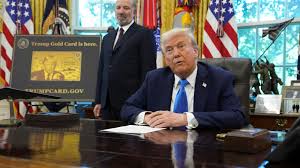On March 30, President Donald Trump announced on the social media platform Truth Social that the historic Southern Magnolia tree in front of the White House will be removed due to safety concerns. Throughout its long history, the distinguished tree served as a site for past presidents to welcome foreign dignitaries and a launch site for the Marine One helicopter. Its initial establishment marked the beginning of a trend of presidents planting their own commemorative trees around the White House.
The Magnolia Tree, colloquially known as the Jackson Magnolia, has stood for nearly two centuries, and it’s known to be the oldest on the White House grounds. It was “planted shortly after [President Andrew] Jackson took office in 1829 to honor his late wife who had passed away a few months before his inauguration,” according to USA Today. The seeds are even rumored to have been brought from Jackson’s Tennessee home when he moved to the White House. Furthermore, the southern magnolia tree is near the “curved portico on the south side of the White House,” the National Park Service explains. Due to the tree’s slow growth, it didn’t appear in the White House photos until 30 years later, but Jackson is known to have been the president who planted it.
Even prior to Trump’s announcement on Sunday, individuals working at the White House had expressed concerns for the tree’s longevity. Arborists have struggled to sustain the sickly southern magnolia representing the White House’s overall image. For example, in 1994, a Cessna airplane that had been targeting the White House crashed into the White House grounds, History on the Net reports. The crash impacted the trees and the trees later earned the name, “Witness Trees,” as they have been part of numerous major moments in American history. Another example is in late 2017 when the two trees planted by President Jackson underwent significant care and restoration, AP News indicates.
“Everything must come to an end, and this tree is in terrible condition, a very dangerous safety hazard, at the White House Entrance, no less, and must now be removed,” Trump announced, according to The New York Post. “This process will take place next week, and will be replaced by another, very beautiful tree.”
The removal of the historic magnolia tree is not the only change to the White House Trump has made since the start of his presidential term. In mid-February, Trump revealed that he is considering whether to pave the grass at the Rose Garden and replace it with a hard surface, The New York Times reveals. The Rose Garden, which serves as a location where presidents would deliver speeches and hold ceremonies, symbolizes the beauty and history of the White House, marking Trump’s decision as a major change in the history of the monument.
Amid the changes brought to the White House, however, Trump offered a potential segway to preserving the historic nature of the tree. To preserve the original tree’s legacy, the wood from the fallen tree will be utilized in other areas of the White House. The removal of the Jackson Magnolia has sparked strong interest due to its historical significance, and some critics feel like the government is cutting off a part of American history. As preparations occur to say goodbye to the tree that has stood by the White House for generations, a new tree to be planted in place of the old is being considered.








